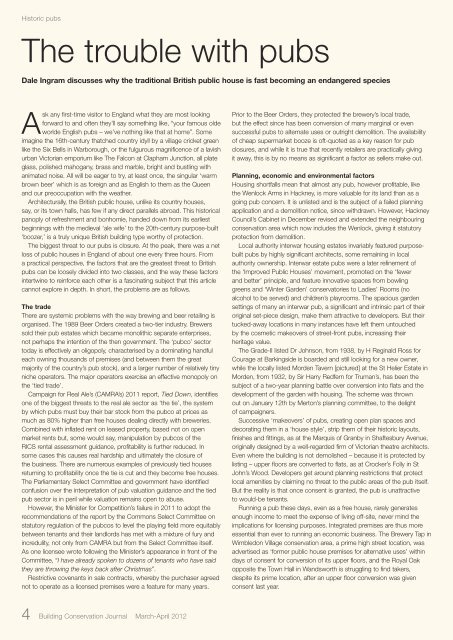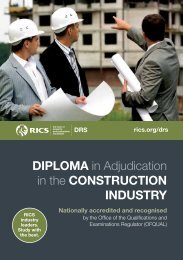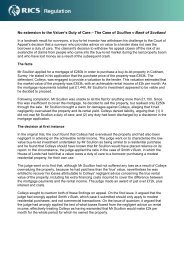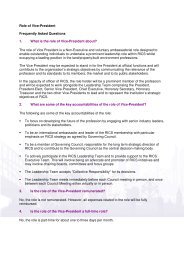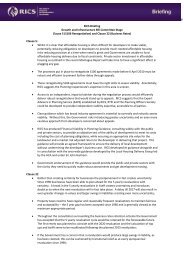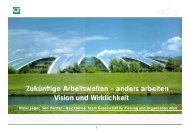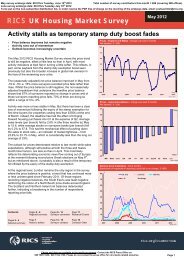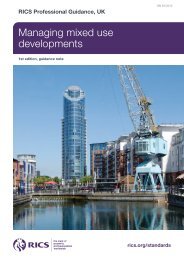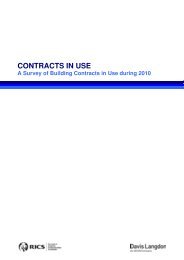Building Conservation Journal - RICS
Building Conservation Journal - RICS
Building Conservation Journal - RICS
Create successful ePaper yourself
Turn your PDF publications into a flip-book with our unique Google optimized e-Paper software.
Historic pubs<br />
The trouble with pubs<br />
Dale Ingram discusses why the traditional British public house is fast becoming an endangered species<br />
Ask any first-time visitor to England what they are most looking<br />
forward to and often they'll say something like, “your famous olde<br />
worlde English pubs – we’ve nothing like that at home”. Some<br />
imagine the 16th-century thatched country idyll by a village cricket green<br />
like the Six Bells in Warborough, or the fulgurous magnificence of a lavish<br />
urban Victorian emporium like The Falcon at Clapham Junction, all plate<br />
glass, polished mahogany, brass and marble, bright and bustling with<br />
animated noise. All will be eager to try, at least once, the singular ‘warm<br />
brown beer’ which is as foreign and as English to them as the Queen<br />
and our preoccupation with the weather.<br />
Architecturally, the British public house, unlike its country houses,<br />
say, or its town halls, has few if any direct parallels abroad. This historical<br />
panoply of refreshment and bonhomie, handed down from its earliest<br />
beginnings with the medieval ‘ale wife’ to the 20th-century purpose-built<br />
‘boozer,’ is a truly unique British building type worthy of protection.<br />
The biggest threat to our pubs is closure. At the peak, there was a net<br />
loss of public houses in England of about one every three hours. From<br />
a practical perspective, the factors that are the greatest threat to British<br />
pubs can be loosely divided into two classes, and the way these factors<br />
intertwine to reinforce each other is a fascinating subject that this article<br />
cannot explore in depth. In short, the problems are as follows.<br />
The trade<br />
There are systemic problems with the way brewing and beer retailing is<br />
organised. The 1989 Beer Orders created a two-tier industry. Brewers<br />
sold their pub estates which became monolithic separate enterprises,<br />
not perhaps the intention of the then government. The ‘pubco’ sector<br />
today is effectively an oligopoly, characterised by a dominating handful<br />
each owning thousands of premises (and between them the great<br />
majority of the country’s pub stock), and a larger number of relatively tiny<br />
niche operators. The major operators exercise an effective monopoly on<br />
the ‘tied trade’.<br />
Campaign for Real Ale’s (CAMRA’s) 2011 report, Tied Down, identifies<br />
one of the biggest threats to the real ale sector as ‘the tie’, the system<br />
by which pubs must buy their bar stock from the pubco at prices as<br />
much as 80% higher than free houses dealing directly with breweries.<br />
Combined with inflated rent on leased property, based not on open<br />
market rents but, some would say, manipulation by pubcos of the<br />
<strong>RICS</strong> rental assessment guidance, profitability is further reduced. In<br />
some cases this causes real hardship and ultimately the closure of<br />
the business. There are numerous examples of previously tied houses<br />
returning to profitability once the tie is cut and they become free houses.<br />
The Parliamentary Select Committee and government have identified<br />
confusion over the interpretation of pub valuation guidance and the tied<br />
pub sector is in peril while valuation remains open to abuse.<br />
However, the Minister for Competition’s failure in 2011 to adopt the<br />
recommendations of the report by the Commons Select Committee on<br />
statutory regulation of the pubcos to level the playing field more equitably<br />
between tenants and their landlords has met with a mixture of fury and<br />
incredulity, not only from CAMRA but from the Select Committee itself.<br />
As one licensee wrote following the Minister’s appearance in front of the<br />
Committee, “I have already spoken to dozens of tenants who have said<br />
they are throwing the keys back after Christmas”.<br />
Restrictive covenants in sale contracts, whereby the purchaser agreed<br />
not to operate as a licensed premises were a feature for many years.<br />
4 <strong>Building</strong> <strong>Conservation</strong> <strong>Journal</strong> March-April 2012<br />
Prior to the Beer Orders, they protected the brewery’s local trade,<br />
but the effect since has been conversion of many marginal or even<br />
successful pubs to alternate uses or outright demolition. The availability<br />
of cheap supermarket booze is oft-quoted as a key reason for pub<br />
closures, and while it is true that recently retailers are practically giving<br />
it away, this is by no means as significant a factor as sellers make out.<br />
Planning, economic and environmental factors<br />
Housing shortfalls mean that almost any pub, however profitable, like<br />
the Wenlock Arms in Hackney, is more valuable for its land than as a<br />
going pub concern. It is unlisted and is the subject of a failed planning<br />
application and a demolition notice, since withdrawn. However, Hackney<br />
Council’s Cabinet in December revised and extended the neighbouring<br />
conservation area which now includes the Wenlock, giving it statutory<br />
protection from demolition.<br />
Local authority interwar housing estates invariably featured purposebuilt<br />
pubs by highly significant architects, some remaining in local<br />
authority ownership. Interwar estate pubs were a later refinement of<br />
the ‘Improved Public Houses’ movement, promoted on the ‘fewer<br />
and better’ principle, and feature innovative spaces from bowling<br />
greens and ‘Winter Garden’ conservatories to Ladies’ Rooms (no<br />
alcohol to be served) and children’s playrooms. The spacious garden<br />
settings of many an interwar pub, a significant and intrinsic part of their<br />
original set-piece design, make them attractive to developers. But their<br />
tucked-away locations in many instances have left them untouched<br />
by the cosmetic makeovers of street-front pubs, increasing their<br />
heritage value.<br />
The Grade-II listed Dr Johnson, from 1938, by H Reginald Ross for<br />
Courage at Barkingside is boarded and still looking for a new owner,<br />
while the locally listed Morden Tavern [pictured] at the St Helier Estate in<br />
Morden, from 1932, by Sir Harry Redfern for Truman’s, has been the<br />
subject of a two-year planning battle over conversion into flats and the<br />
development of the garden with housing. The scheme was thrown<br />
out on January 12th by Merton’s planning committee, to the delight<br />
of campaigners.<br />
Successive ‘makeovers’ of pubs, creating open plan spaces and<br />
decorating them in a ‘house style’, strip them of their historic layouts,<br />
finishes and fittings, as at the Marquis of Granby in Shaftesbury Avenue,<br />
originally designed by a well-regarded firm of Victorian theatre architects.<br />
Even where the building is not demolished – because it is protected by<br />
listing – upper floors are converted to flats, as at Crocker’s Folly in St<br />
John’s Wood. Developers get around planning restrictions that protect<br />
local amenities by claiming no threat to the public areas of the pub itself.<br />
But the reality is that once consent is granted, the pub is unattractive<br />
to would-be tenants.<br />
Running a pub these days, even as a free house, rarely generates<br />
enough income to meet the expense of living off-site, never mind the<br />
implications for licensing purposes. Integrated premises are thus more<br />
essential than ever to running an economic business. The Brewery Tap in<br />
Wimbledon Village conservation area, a prime high street location, was<br />
advertised as ‘former public house premises for alternative uses’ within<br />
days of consent for conversion of its upper floors, and the Royal Oak<br />
opposite the Town Hall in Wandsworth is struggling to find takers,<br />
despite its prime location, after an upper floor conversion was given<br />
consent last year.


